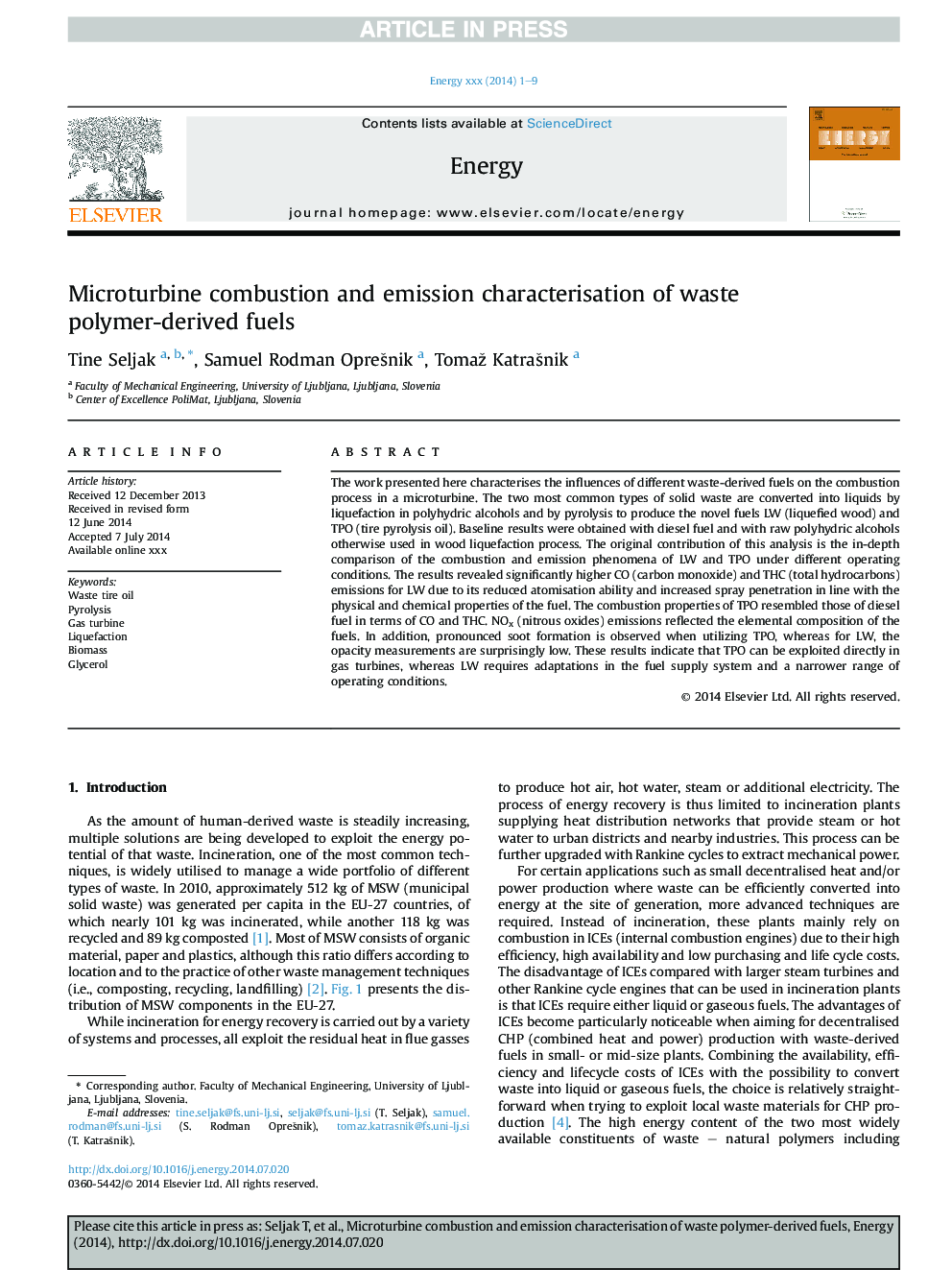| Article ID | Journal | Published Year | Pages | File Type |
|---|---|---|---|---|
| 8076342 | Energy | 2014 | 9 Pages |
Abstract
The work presented here characterises the influences of different waste-derived fuels on the combustion process in a microturbine. The two most common types of solid waste are converted into liquids by liquefaction in polyhydric alcohols and by pyrolysis to produce the novel fuels LW (liquefied wood) and TPO (tire pyrolysis oil). Baseline results were obtained with diesel fuel and with raw polyhydric alcohols otherwise used in wood liquefaction process. The original contribution of this analysis is the in-depth comparison of the combustion and emission phenomena of LW and TPO under different operating conditions. The results revealed significantly higher CO (carbon monoxide) and THC (total hydrocarbons) emissions for LW due to its reduced atomisation ability and increased spray penetration in line with the physical and chemical properties of the fuel. The combustion properties of TPO resembled those of diesel fuel in terms of CO and THC. NOx (nitrous oxides) emissions reflected the elemental composition of the fuels. In addition, pronounced soot formation is observed when utilizing TPO, whereas for LW, the opacity measurements are surprisingly low. These results indicate that TPO can be exploited directly in gas turbines, whereas LW requires adaptations in the fuel supply system and a narrower range of operating conditions.
Related Topics
Physical Sciences and Engineering
Energy
Energy (General)
Authors
Tine Seljak, Samuel Rodman Oprešnik, Tomaž Katrašnik,
